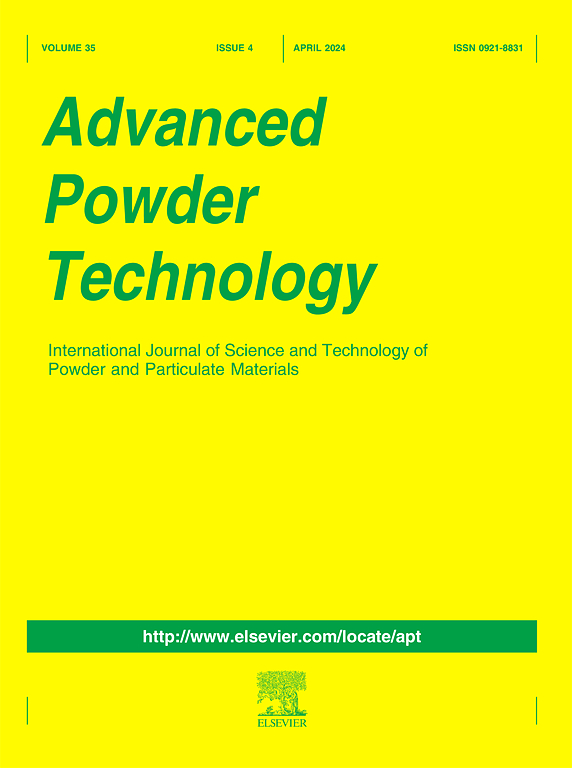Tailoring Bismuth Antimonate nanocomposites with barium and calcium for superior electrochemical properties in supercapacitors
IF 4.2
2区 工程技术
Q2 ENGINEERING, CHEMICAL
引用次数: 0
Abstract
This study employs a dual substitution strategy on Bismuth Antimonate to improve its performance as an electrode material for supercapacitors. Nanocomposites were synthesized by incorporating Barium (Ba2+) and Calcium (Ca2+) into Bismuth Antimonate in three different ratios, labeled as B1C1BiSO, B1C2BiSO, and B2C1BiSO. The simple solid-state method used for the preparation yielded nanocomposites with closely packed spherical nanostructures, resulting in a porous architecture that facilitates electrolyte access to the active surface areas. The incorporation of Ba2+ and Ca2+ creates additional active sites, significantly boosting the electrochemical results of BiSO. Notably, the B1C2BiSO electrode achieves a capacitance of 573 F/g at 1 A/g in a three-electrode setup, retaining 88 % of its original capacitance after 5000 cycles—surpassing the performance of other samples. Additionally, we developed an asymmetric supercapacitor device (B1C2BiSO||AC) with activated carbon for the negative electrode. This device delivers a capacitance of 117.5 F/g at 1 A/g and maintains 76.25 % capacity retention over 15,000 cycles. This strategy proves to be a capable approach to advance the energy storage capabilities of asymmetric supercapacitor devices.

用钡和钙裁剪锑酸铋纳米复合材料在超级电容器中具有优异的电化学性能
本研究采用双取代策略,以提高锑酸铋作为超级电容器电极材料的性能。将钡(Ba2+)和钙(Ca2+)以三种不同的比例掺入锑酸铋中合成纳米复合材料,标记为B1C1BiSO、B1C2BiSO和B2C1BiSO。使用简单的固态方法制备的纳米复合材料具有紧密堆积的球形纳米结构,导致多孔结构,有利于电解质进入活性表面区域。Ba2+和Ca2+的结合产生了额外的活性位点,显著提高了BiSO的电化学结果。值得注意的是,在三电极设置下,B1C2BiSO电极在1 a /g下实现了573 F/g的电容,在5000次循环后保持了88%的原始电容,超过了其他样品的性能。此外,我们开发了一种不对称超级电容器器件(B1C2BiSO||AC),活性炭为负极。该器件在1 a /g时提供117.5 F/g的电容,并在15,000次循环中保持76.25%的容量保持率。该策略被证明是提高非对称超级电容器器件能量存储能力的有效方法。
本文章由计算机程序翻译,如有差异,请以英文原文为准。
求助全文
约1分钟内获得全文
求助全文
来源期刊

Advanced Powder Technology
工程技术-工程:化工
CiteScore
9.50
自引率
7.70%
发文量
424
审稿时长
55 days
期刊介绍:
The aim of Advanced Powder Technology is to meet the demand for an international journal that integrates all aspects of science and technology research on powder and particulate materials. The journal fulfills this purpose by publishing original research papers, rapid communications, reviews, and translated articles by prominent researchers worldwide.
The editorial work of Advanced Powder Technology, which was founded as the International Journal of the Society of Powder Technology, Japan, is now shared by distinguished board members, who operate in a unique framework designed to respond to the increasing global demand for articles on not only powder and particles, but also on various materials produced from them.
Advanced Powder Technology covers various areas, but a discussion of powder and particles is required in articles. Topics include: Production of powder and particulate materials in gases and liquids(nanoparticles, fine ceramics, pharmaceuticals, novel functional materials, etc.); Aerosol and colloidal processing; Powder and particle characterization; Dynamics and phenomena; Calculation and simulation (CFD, DEM, Monte Carlo method, population balance, etc.); Measurement and control of powder processes; Particle modification; Comminution; Powder handling and operations (storage, transport, granulation, separation, fluidization, etc.)
 求助内容:
求助内容: 应助结果提醒方式:
应助结果提醒方式:


